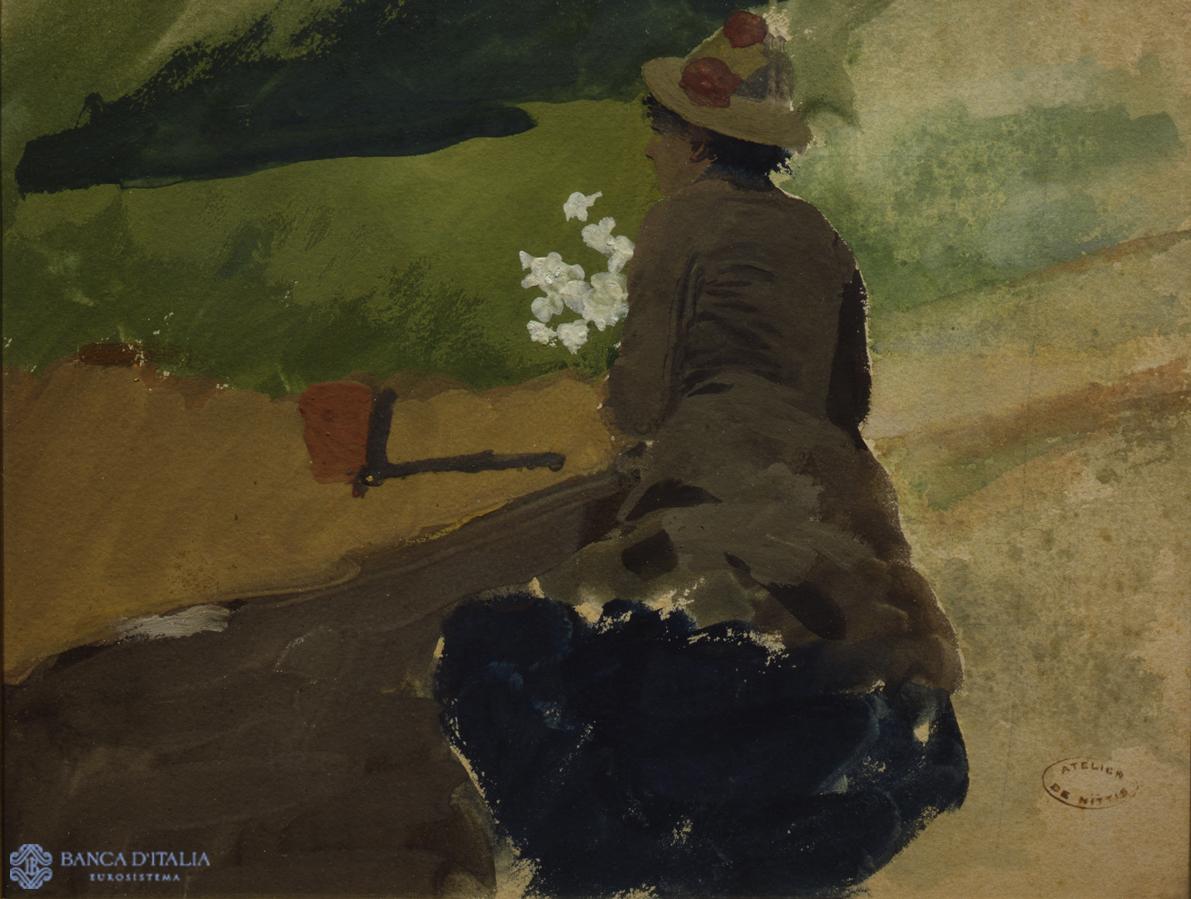Giuseppe De Nittis (Barletta 1846 – Saint-Germain-en-Laye 1884) is one of the most important 19th-century Italian painters. Starting in 1867, his mature work began with the Macchiaioli. In the same year, at the age of twenty-one, he moved to Paris where, with return visits to Italy and periods spent in London, he enjoyed a brilliant career. In 1874, he joined the Impressionists on the occasion of their famous exhibition at Nadar’s studio.
In Paris, De Nittis turned his painting style from the Macchiaioli towards Impressionism. His escape from the confines of the studios to the outdoors, the “plein air”, and his interest in urban, especially worldly, themes typical of modern life (as described by Baudelaire, poet of the 19th-century city) marked the high points of his art, alongside which there are some less powerful works that were more the result of cultural compromises.
At the height of his art, and particularly in his landscapes and urban views, De Nittis evidently also shared the Impressionists’ interest in Japanese prints, suggesting a departure from the traditional ideas of perspective and thus a strong reliance on the two-dimensional nature of the canvas. This aspect is particularly important in the Italian context, in which the painting is rarely envisaged outside the illusion of the third dimension.
The intense rendering of the vibration of light embodied in colour is typical of De Nittis’s more original and significant work.
Giuseppe De Nittis
Giuseppe De Nittis (Barletta 1846 - Saint-Germain-en-Laye 1884)
19th century AD



